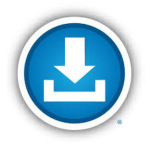By Mark Branning and Brad Tritle
Mark Branning is Principal at mdb Healthcare IT Solutions, Adjunct Professor at National University, a member of the HIMSS Connected Patient Committee and co-chair of the Connected Patient Community. Mr. Branning has spent 33 years in the healthcare information systems industry and is a consultant specializing in patient engagement, health information exchange (HIE), interoperability, and product positioning.
Brad Tritle is Global Product Owner for Chronic Disease Management at vitaphone health solutions, co-founder of eHealth Nexus, former CEO of eHealth Trust Arizona, former executive director of Arizona Health-e Connection, and has served as a consultant to ONC on patient engagement for health information exchange. He is a member of the HIMSS Connected Patient Committee, co-chair of the Connected Patient Community, and chair of the HIMSS Social Media Task Force.
This is a cross-post of a HIMSS blog post and it is posted here with permission.
Though the term Consumer Mediated Exchange, which we suggest shortening to “C-ME” (see me), has only recently come into the vernacular, due to its official standing as one of ONC’s three approved forms of Health Information Exchange (HIE), but in a non-electronic way has been around for quite some time (From the Office of The National Coordinator: The Strategy for Advancing the Exchange of Health Information). In fact, one of the authors recalls a conversation between two university students nearly 30 years ago – one a veterinary student and the other pre-med – in which the vet student made the case that a vet must be a better diagnostician than a medical doctor, as the lower animals have no way to personally share a medical history or clearly communicate symptoms! In a way, C-ME has existed “offline” for a very long time, but here are some recent anecdotes that support its value:
- A former president of a state medical association and medical director for a multi-state health plan stated he would rather trust information provided by a patient than that provided by a physician, based on his experience with reviewing physician documentation.
- A former HHS regional director was lauded by emergency room physicians when he produced a written record of his mother’s health condition and medications.
- A US healthcare executive’s daughter studying in China was required to obtain a journal in which physicians would document any visits, but which would remain in her stewardship.
- The Patient Education protocol for the Indian Health Service medication reconciliationprocess includes the patient be asked to “provide clinicians with a copy of their complete medication profile anytime there is a transition of care.”
 The US is moving forward with enabling the viewing, downloading and transmission of health data by patients, as part of the Meaningful Use requirements, and together with the momentum around Blue Button/Blue Button + this will further enable C-ME. Yet, once a patient has access to this data, how should it be organized? Where should it be stored? How should it be shared? Could a suitable solution be used for other forms of Patient Generated Health Data (PGHD), and even be a secure location for a patient’s mapped genomic and associated data? Can it be used by apps of the patient’s or authorized provider’s choosing to create more value to the patient? The answer to most of the basic question was conceived and agreed-to seven years ago by two think tanks that are hard pressed to agree on anything healthcare-related: The left-leaning Progressive Policy Institute and the right-leaning Heritage Foundation. These two organizations supported a bill in Congress that had bipartisan support entitled “the Independent Health Record Trust Act of 2007.” Today, the original policy analysts for these organizations remain steadfast in their support of this concept as members of the Health Record Banking Alliance Advisory Board (HRBA), together with HIMSS Vice President Tom Leary and other leaders and chaired by Ted Shortliffe, MD, PhD, the former president and CEO of the American Medical Informatics Association (AMIA). Yes, both authors of this blog are very involved with HRBA, also.
The US is moving forward with enabling the viewing, downloading and transmission of health data by patients, as part of the Meaningful Use requirements, and together with the momentum around Blue Button/Blue Button + this will further enable C-ME. Yet, once a patient has access to this data, how should it be organized? Where should it be stored? How should it be shared? Could a suitable solution be used for other forms of Patient Generated Health Data (PGHD), and even be a secure location for a patient’s mapped genomic and associated data? Can it be used by apps of the patient’s or authorized provider’s choosing to create more value to the patient? The answer to most of the basic question was conceived and agreed-to seven years ago by two think tanks that are hard pressed to agree on anything healthcare-related: The left-leaning Progressive Policy Institute and the right-leaning Heritage Foundation. These two organizations supported a bill in Congress that had bipartisan support entitled “the Independent Health Record Trust Act of 2007.” Today, the original policy analysts for these organizations remain steadfast in their support of this concept as members of the Health Record Banking Alliance Advisory Board (HRBA), together with HIMSS Vice President Tom Leary and other leaders and chaired by Ted Shortliffe, MD, PhD, the former president and CEO of the American Medical Informatics Association (AMIA). Yes, both authors of this blog are very involved with HRBA, also.
What is an independent health record trust/bank?
A health record bank (HRB) or trust is an independent organization that provides a secure electronic repository for storing and maintaining an individual’s lifetime health and medical records, obtained from multiple sources, and assuring that the individual controls who accesses the records.
The non-profit HRBA has issued white papers on business models, technical architecture, and researched how traditional HIEs that may be struggling with business models or technical scalability might migrate to a more sustainable model using C-ME. The technical architecture also facilitates the building and authorizing of apps that could interact with the data, opening a new marketplace for valuable provider and patient Health 2.0 tools that facilitate engagement, patient activation, and financial sustainability.
Lessons learned from one health record banking startup were recently published in the February 2014 issue of Methods of Information in Medicine. The community of supporters, which includes the authors and many HIMSS members, recognizes the perfect model has not yet been implemented, though several suggested models await implementation. Could this be the cure to the lack of a true longitudinal medical record, and a tool enabling much more personalized patient engagement?
Should Congress reconsider establishing such a regulated, bank-like infrastructure (with opportunities for multiple technical infrastructure vendors) that also facilitates value creation as shown by the SMART Platform work funded by HHS (www.smartplatforms.org)?
With more opportunities for consumers (patients) to view or obtain their health information from separate “silos,” including genomic mapping and associated disease risk data, and the need to organize and share Patient Generated Health Data with physician/hospital EHRs, the timing has never been better to consider even better options for C-ME facilitation.
How do you think Independent Health Record Trusts could be established and implemented ?








Yes, patient mediated exchange is the future because “nothing about me without me” works for many people. Blue Button Plus, because it allows full and secure automation, can actually displace the current forms of exchange that are not accessible to us as patients. I call this the Blue Button First movement to remind people that they might want to avoid “providers” that don’t have a full-featured Blue Button Plus portal.
A full-featured BB+ portal has un-delayed and signed health records that retain their authenticity even when transferred via patient-mediated exchange.
Blue Button First also means that you should opt-out of any health information exchange by a provider that doesn’t offer you a full-featured BB+ portal.
And one more thing. Patient-mediated exchanges are software, and software can be either open source or not. Open source software for patient-mediated exchange will become available and it will be more secure, more privacy-preserving, and more standards-compliant than the proprietary alternatives.
We want our medicine to be open source, shouldn’t our health information software be open source as well?
I’ve been my own C-ME for a couple of decades now. I performed the same function for my parents in the last two years of their lives when I managed their medical care.
Data portability and access are subjects that patients are intimately familiar with – the healthcare system in the US has only recently woken up to the value of Health Information Exchange (HIE), and would be wise to let patients help. Since we’re already performing that function as meat-based computation devices.
Very timely topic. I was blessed with the opportunity to moderate the PCPCC e-Health Public Meeting this week. We interviewed Dr. Kendrick from the Oklahoma My Health Network. I believe they are a good example for top 10% of HIE implementations for quality and value added to most stakeholders.
The architecture makes sense as the HIE brings services that eliminate administrative costs among providers, policy experts, payers and even patients.
They are using HealthVault as a p-HR which -as you know- allows patients to create their own information sharing profiles as well as connect to lab hubs, pharmacy hubs etc.
Your comment on a regulated banking model is something I would support. Here is the reason:
With the perspective of Health Care Executive with clinical program skills and HIT innovation patents I would be short sighted unless I add in my 47 years as a person with diabetes and associated co-morbidity.
We were promised increased safety, reduced cost etc due to implementation of record exchanges.
Instead, our providers (including integrated delivery networks) are taking incentive payments for technology and using data for performance payments yet not electing to share data with patients through a Single Sign On technology. The HIE in Oklahoma would be a natural architecture as it could push CCDs to HealthVault where patients could then access their global history.
We forget that 5% of the US population accounts for 50% of the HC expenditure. These are folks like myself, with multiple sub-specialists who belong to different networks of care.
My experience has not changed with the exception of postal costs.
To assemble my documentation for a new physician (in this case neurosurgeon) I had to access three portals, drive to one imaging service and then cut and paste the sentinel data that patients often forget to report into HealthVault. Then, I extracted data again through cut and paste methodology to deposit as a personal e-mail note in my secure ‘MyHEALTH’ Record at Duke since they will not allow patients to upload information (Yes patient data entry is extremely important and easily controlled with regard to how it is used for you lawyer types.
Unless we can get competitive business units (hence health care fragmentation) to allow their information to flow we will not see the returns we have been promised.
Here is an index case: I had neurosurgery on c-cpine. My family has history of malignant hyperthermia. It is only noted deep within a paper record somewhere in California.
How many patients remember stuff like this?
What if I received Halo-thane?
50/50 chance of survival?
So, I cut and paste from Healthvault.
The variable that we completely forgot when re-engineering our system is the fact that our society is based on individual rights and will.
Where this gives rise to incredible innovation it does not guarantee that humans will exchange information without receiving some return on the investment. Even when someones life is in the balance.
Yes , it is that dramatic when one looks at one patient at a time.